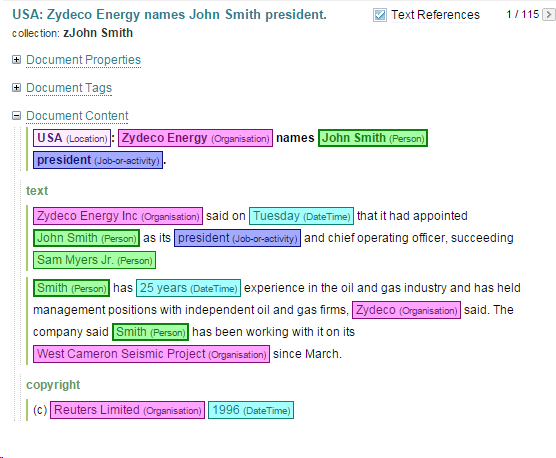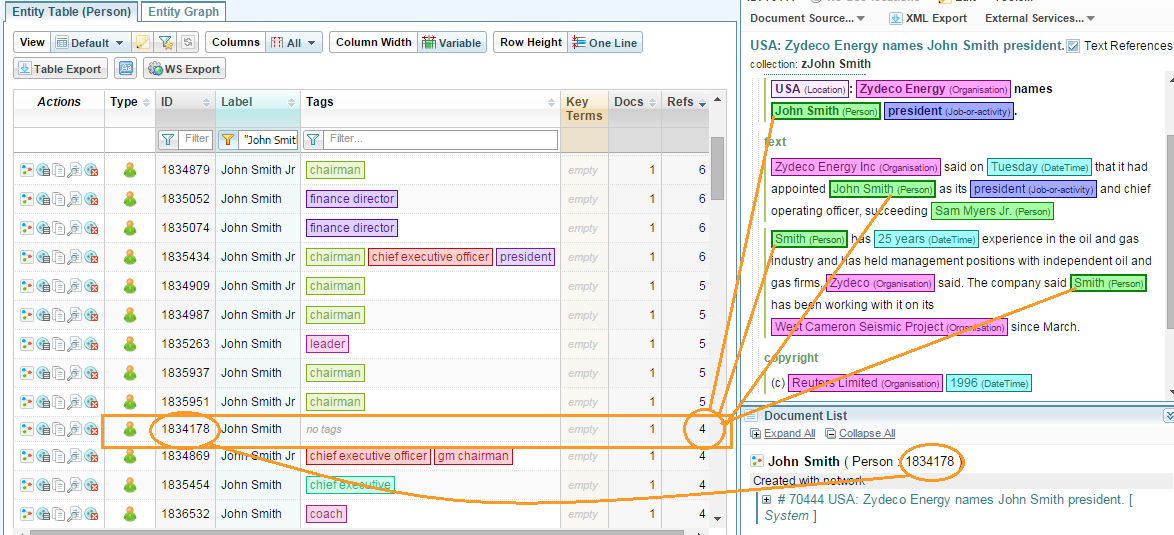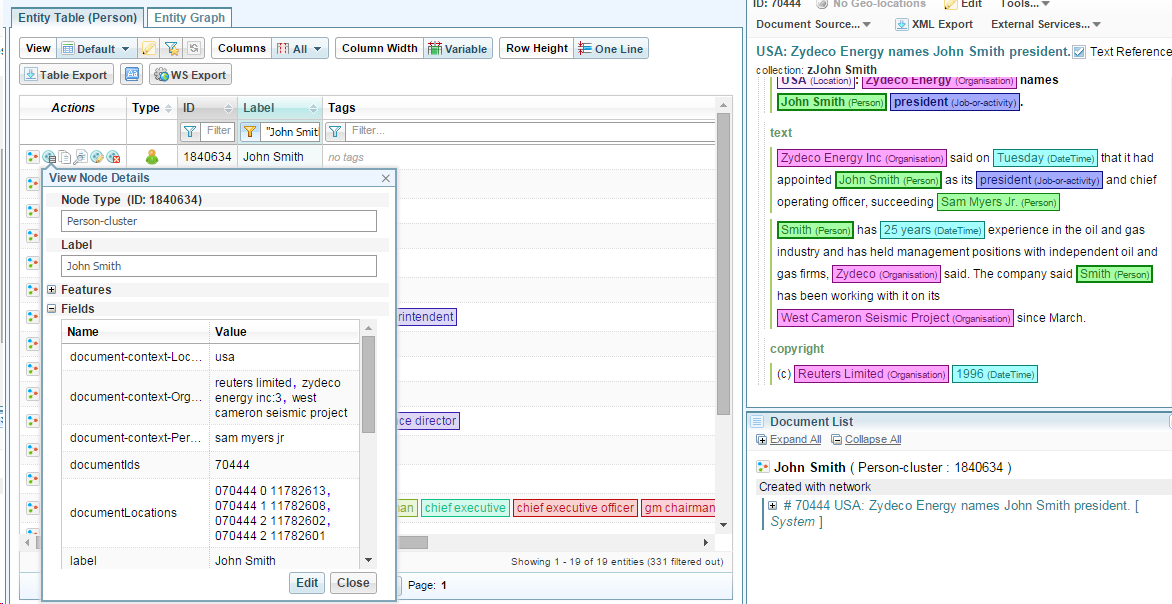Concept: Networks
Sintelix Core Process
To get a better understanding of the process and core concepts involved in the creation of a Network, view the Sintelix Core Process video.
Information of interest
Entities and relationships
Entities and relationships between entities are identified.
Almost anything can be an entity, for example, concepts, objects, emotions, dates, times, monetary values, items of clothing, food, weather conditions and colours. Common entities include person, organisation and location.
Clustering
Clustering groups similar things together.
Entities are grouped (clustered) to become nodes in a Network, and the relationships between these entities become links within the Network.
A Network simply stores information about the nodes and links.
Clustering can be implemented in stages:
-
Document Level - Simple Node:
A simple node is extracted from a single document, by grouping common text references into a single entity.
-
Collection Level - Clustered Node:
A clustered node is extracted from the network of simple nodes, by grouping entities that appear to be the same entity across all documents in a collection. For example, documents 1, 5 and 9 all have an entity "John Smith", so these three simple nodes are grouped into a single clustered node called John Smith.
-
Network Level - Additional Node :
Advanced clustering analysis of the network of clusteered nodes identifies common features, such as communities, email threads, topics or key phrases.
Example: Simple Node
For example, Sintelix collects all references to a Person "John", "John Smith" and "Smith"; and groups them all into a Person Entity "John Smith" for the document. The Person Entity "John Smith" is then created as a simple node, with links to all of the text references that belong to the node. It performs a similar process to pick out all of the Entity Nodes for the document, like Organisation and Location.


